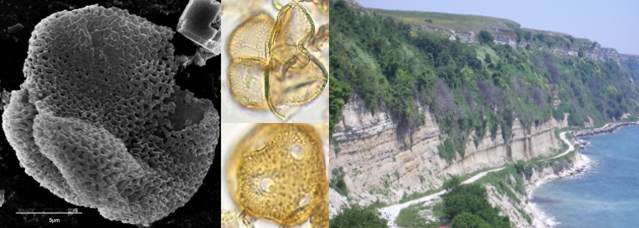
Palaeobotanical collection
The palaeobotanical collection of the Institute of Botany contains approximately 16000 specimens of fossil plants from more than 100 localities in Bulgaria. The collection is basically composed of leaf imprints, but there is considerable number of fruit/seed remains. It comprises evidences of geological history of plants in Balkan Peninsula during the Cenozoic period (Eocene to Pliocene). The collection is strong in Miocene vascular plants (pteridophytes, gymnosperms, and angiosperms) found in numerous sites. The Eocene, Oligocene and Pliocene fossil plants are also well represented. Collection of fossil finds is still continued.

Reference palynological collection
The palynological collection of the Institute of Botany contains 7270 pollen slides of 232 recent plant families, and 2811 species. The collection is basically composed of pollen from plants naturally distributed in Bulgaria, but there is considerable number of pollen slides from plants growing in subtropical and tropical areas. Pollen grains are considered to be species specific, and thus are used to identify source plants during the pollen analysis, e.g. when pollen analysis is applied for the reconstruction of the vegetation history throughout the Cenozoic, and estimation of climatic and anthropogenic influences on the development of floras. The collection is used also as source reference information for pollen identification in surface sample and pollen traps, in air (aeropalynology) or honey (melissopalynology).

Reference collection of leaves and fruits/seeds of extant plants
The collection of leaves and carpoids (fruits and seeds) of the Institute of Botany contains approximately 6000 specimens from recent plant species growing mainly in the subtropics and tropics, e.g., Central and North America, Caribbean, Africa and East/Southeast Asia. It is widely used as a source of reference information for identifying the recent analogues of fossil plants.
Collection of cuticular samples
The cuticular collection of the Institute of Botany contains 2720 slides of cuticles from recent and fossil plants. The collection is basically composed of cuticles from Bulgarian plants, but there are a number of cuticle slides from plants native in Asia, North Africa and Mediterranean, North and South America.